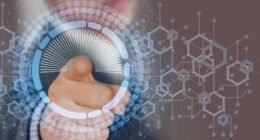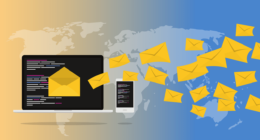Artificial Intelligence (AI) has evolved rapidly, from rule-based systems to deep learning models that recognize patterns in massive datasets. But the next frontier is even more groundbreaking: self-learning AI systems that adapt in real-time. Unlike traditional models that require retraining on new data, these advanced systems can learn on the fly, adjust to dynamic environments, and improve continuously without human intervention.
This shift is transforming industries—from autonomous vehicles that react to unexpected road conditions to cybersecurity systems that detect and neutralize threats as they emerge. In this blog, we’ll explore how self-learning AI works, its real-world applications, and the challenges it presents.
What Are Self-Learning AI Systems?
Self-learning AI, also known as continual or lifelong learning AI, refers to systems that can:
- Learn incrementally – Adapt to new data without forgetting previous knowledge.
- Make real-time adjustments – Respond to changes instantly, like a self-driving car avoiding a sudden obstacle.
- Improve autonomously – Optimize performance without needing manual updates.
Traditional AI models (like GPT-4 or convolutional neural networks) are trained on static datasets and require periodic retraining. In contrast, self-learning AI mimics human learning—constantly evolving based on new experiences.
Key Technologies Behind Self-Learning AI
- Reinforcement Learning (RL) – AI learns by trial and error, receiving feedback from its environment (e.g., AlphaGo mastering chess through self-play).
- Meta-Learning (Learning to Learn) – AI quickly adapts to new tasks by leveraging prior knowledge.
- Neuromorphic Computing – Hardware designed to mimic the human brain, enabling faster, more efficient learning.
- Federated Learning – AI improves by learning from decentralized data sources (e.g., smartphones) without compromising privacy.
Real-World Applications
1. Autonomous Vehicles
Self-driving cars must react instantly to unpredictable conditions—pedestrians, weather changes, or road construction. Self-learning AI enables these vehicles to continuously refine their decision-making without waiting for software updates.
2. Cybersecurity
Hackers constantly develop new attack methods. AI-powered security systems now detect and neutralize threats in real-time, learning from each attempted breach to improve future defenses.
3. Healthcare & Personalized Medicine
AI that adapts to patient data in real-time can adjust treatment plans based on new symptoms or test results, leading to more accurate diagnoses and dynamic care strategies.
4. Robotics & Manufacturing
Industrial robots with self-learning capabilities can optimize production lines on the fly, reducing downtime and adapting to new tasks without reprogramming.
5. Customer Service & Chatbots
Next-gen AI assistants don’t just follow scripts—they learn from each interaction, improving responses and personalizing conversations over time.
Challenges & Ethical Concerns
While self-learning AI offers immense potential, it also raises critical issues:
1. Catastrophic Forgetting
AI systems may overwrite old knowledge when learning new information, leading to errors. Researchers are working on algorithms that retain past learning while adapting.
2. Bias & Unintended Consequences
If an AI evolves based on flawed or biased data, it could reinforce harmful behaviors. Continuous monitoring is essential.
3. Security Risks
Malicious actors could manipulate self-learning AI by feeding it deceptive data (e.g., tricking an autonomous vehicle into misreading road signs).
4. Regulatory & Control Issues
How do we govern AI that changes autonomously? Policymakers must balance innovation with accountability.
The Future of Self-Learning AI
As self-learning systems become more advanced, we’ll see:
- AI that collaborates with humans in real-time (e.g., doctors + AI making split-second medical decisions).
- General AI (AGI) that learns like humans, moving beyond narrow applications.
- AI ecosystems where multiple agents learn from each other, accelerating innovation.
Self-learning AI represents a paradigm shift—moving from static, pre-trained models to dynamic, adaptive intelligence. While challenges remain, the potential benefits across industries are enormous. Businesses, researchers, and policymakers must work together to harness this technology responsibly.
The future isn’t just about AI that knows—it’s about AI that learns, evolves, and grows with us.
What do you think? Will self-learning AI bring us closer to true artificial general intelligence (AGI), or does it introduce new risks we’re not prepared for? Share your thoughts in the comments!











